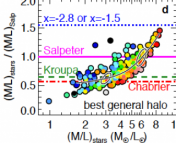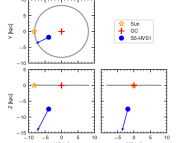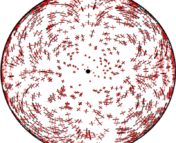Title: The Progenitor of the Supernova Imposter AT 2019krl: a SN 2008S-like Transient from a Blue Supergiant
Authors: Jennifer E. Andrews, Jacob E. Jencson, Schuyler D. Van Dyk, et al.
First author’s institution: Steward Observatory, University of Arizona
Journal: Submitted to the Astrophysical Journal. Open access on arXiv.
Disclaimer: The author would first like to publicly state that Black lives and Black Trans lives matter. Secondly, the author condemns all police brutality against people of color. Lastly, the author recognizes that the writing of this article was performed on the stolen land of indigenous people.
Who Done it?
On the 13th day of the spookiest month, it’s time for a murder stellar mystery! Today’s whodunit revolves around a new explosion in space and the resulting cosmic hunt to find the star system responsible. Whether it be a massive star burping up some hot gas or a sun-sized star diving into a supermassive black hole, we can (usually) only speculate on the specific star(s) involved prior to the explosion. This is because of a lack of pre-explosion imaging of the exact stars responsible for the transient phenomenon. There are A LOT of star systems out there, so it’s understandable that we can’t image all of them before one of them explodes!
Nevertheless, the science mystery team behind today’s paper did have imaging of the star that caused a violent stellar outburst! Thanks to the Hubble and Spitzer (RIP) space telescopes, the murder explosion site was imaged for almost 2 decades prior to the transient, an event nicknamed AT 2019krl, which occurred last year (Figure 1). The stellar explosion highlighted in today’s paper is a “supernova imposter” whose observed luminosity (~million times brighter than our Sun!) is below that of a typical supernova explosion, yet still bright enough to be detected from Earth. These awesome eruptions do not completely unbind the progenitor star, but may occur from stellar instabilities in massive stars (>10x the mass of our sun) or from the collision of a massive star with its binary companion. Jinkies!
Clues From the Past
Using almost 20 years of data from Hubble and Spitzer, the authors reconstructed the luminosity evolution of AT 2019krl’s progenitor star in order to understand its stellar properties. As shown in Figure 2, the star’s life was relatively uneventful for thousands of days up until its turbulent outburst in 2019. The authors then used the star’s overall luminosity to identify exact stellar characteristics such as the star’s type, mass and radius. Just like any good forensic analysis, the team cross-matched the observations with evolutionary models of different massive stars until they found one that matched AT 2019krl’s progenitor.
As shown in Figure 3, the team concluded that this violent outburst originated from a blue supergiant star who started its life as a hot, massive with a main sequence mass that was greater than 14 times the mass of the sun. Then, in 2019, the star violently ejected hot gas moving at speeds higher than ~1000 kilometers per second (2 million miles per hour!), releasing enough energy to be detected by our telescopes. Identifying the stellar culprit behind this explosion represents a major breakthrough in our understanding of how massive stars evolve and what physics may cause these strange, eruptive episodes. And the star might have gotten away with it if it weren’t for those meddling astronomers!




